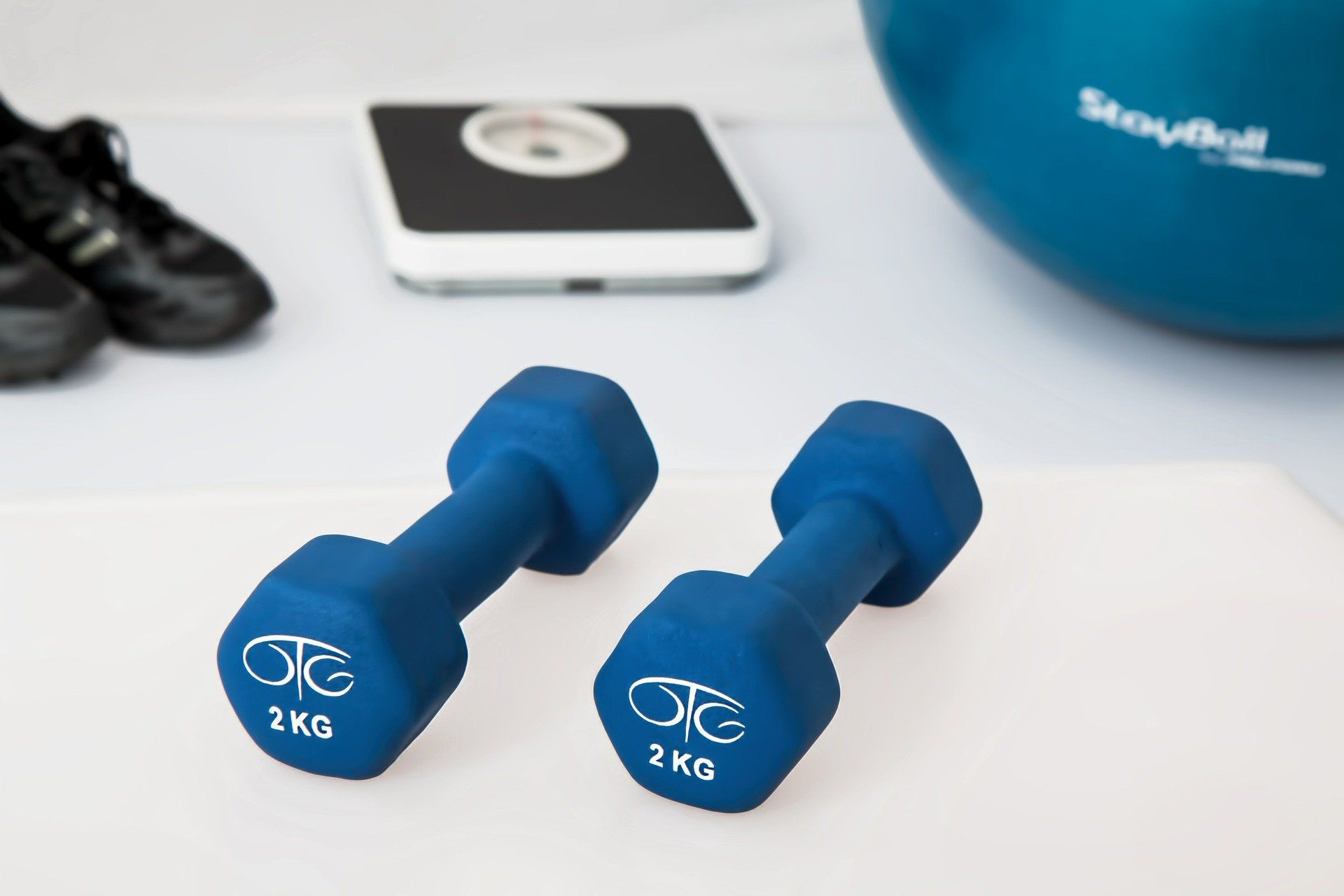Blog Layout
Plant-Based Diets
Oct 15, 2021
Did you know that World Vegan Day is November 1st?
Did you know?
It is a myth that people who follow a plant-based diet are unable to consume enough protein. As long as you choose dairy alternatives, nuts, legumes, soy products and grains, you will meet your protein requirements if you are otherwise healthy.
It is a myth that people who follow a plant-based diet are unable to consume enough protein. As long as you choose dairy alternatives, nuts, legumes, soy products and grains, you will meet your protein requirements if you are otherwise healthy.
World Vegan Day
is the perfect day to break down what a plant-based diet is, how to meet your nutrition needs and how someone who still eats animal products can include more plant-based meals into their diet. We acknowledge that a plant-based diet is not for everyone, however as Dietitians we have seen an increase in people choosing this diet and it's important to make sure it is meeting your nutritional needs.
There are several types of plant-based diets:
- Flexitarian: people who choose to eat vegetarian most of the time, but eat meat or seafood occasionally.
- Pescatarian: people who only eat fish, dairy and eggs in terms of animal products, but no red meat or chicken.
- Vegetarian: people who only eat eggs and dairy in terms of animal products. There are people who choose to just eat dairy or eggs as well.
- Vegan: people who only eat plant-based products – so no dairy, eggs, meat or seafood. Many vegans also choose cruelty free products, such as shampoo, make up, clothing etc.
Benefits of plant-based diets:
- High fibre diet, with research suggesting this reduces bowel cancer risk and supports gut health due to the diversity of plants in the diet
- Less saturated fat in most plant-based protein sources, so reduces heart disease risk
- Reduced risk of high blood pressure
What nutrients do I need to be more mindful of on a plant-based diet?
- Iron: This nutrient helps transport oxygen around our body via blood. The most well-absorbed form of iron in higher amounts is in red meat, chicken and fish. If someone is vegetarian or vegan they can struggle to meet their daily iron needs, especially if they have a menstrual cycle or are an athlete. Plant-based choices include tofu, legumes, dark green vegetables, and fortified cereals and meat alternatives (Vegie Delights).
- Zinc: This nutrient helps support our immune system cells to fight off infections. Zinc is found in high amounts in animal products. Plant-based choices include nuts, beans, and fortified cereals and meat alternatives (Vegie Delights).
- Vitamin B12: Brain health, blood cells and our nervous system use vitamin B12 to function correctly. Vitamin B12 is found in animal products and in fortified products. Generally speaking, only vegans will struggle to meet their daily requirement of vitamin B12, so should discuss supplement options with their GP. In addition, some meat alternatives and nutritional yeast contain vitamin B12.
- Omega 3: This nutrient helps out brain, heart and immune system function optimally. The richest source of omega 3 is from seafood, however plant-based choices include walnuts, hemp seeds, flaxseeds, chia seeds and some oils (canola, soy bean, flaxseed).
- Calcium: Bone health and muscle contraction (including our heart beating) are the main two roles for calcium. The richest source of this nutrient is cow’s milk dairy products, however there are plenty of plant-based options that include calcium-fortified milks (Vitasoy or So Good), chia seeds, tahini, almonds, dark green vegetables, calcium-set tofu and chickpeas.
If you would like individualised advice from one of our Accredited Practising Dietitians, please book via phone call or online today.
Share
Tweet
Share
Mail

By Kathleen McCosker (Accredited Exercise Physiologist, Diabetes Educator)
•
26 Nov, 2021
Managing your diabetes is certainly an important aspect of maintaining your health and quality of life, but your goals and interests are very important too. Exercise Physiologists are specially trained in prescribing exercise to achieve your goals and manage your health while considering all aspects of your life, come and visit one of our Exercise Physiologists to discuss the best exercise for you, your life, your goals, and your diabetes. What is Type 2 Diabetes? Type 2 Diabetes is the result of increased insulin resistance and beta-cell impairment. Your pancreas has cells, named beta-cells, that produce insulin which helps your body use and store glucose, the sugar your body gains from the carbohydrates you eat. When you eat carbohydrates, your pancreas makes and releases insulin, which helps your body use and store the glucose (usually known as ‘sugars’) that are contained in carbohydrate foods. This insulin helps your body use the glucose as energy for your brain and muscles, or store the glucose in your muscles and liver to be used later. Without insulin the glucose stays stuck in your blood, which raises blood glucose levels and reduces the amount of glucose your brain and muscles have available to use as energy. In Type 2 diabetes, two areas of this process are impacted. 1. Beta-cell death: The cells in your pancreas that make insulin are overworked and some cells can die. Usually due to years of working too hard to create enough insulin to keep up with high carbohydrate and sugar intake and/or because they were a bit weaker to begin with and became more easily overworked than usual (due to family history and genetics). 2. Insulin resistance: Your body needs more insulin than usual to get the glucose out of your blood and into cells where it can be used as energy or stored for later. This puts stress on your body to produce more insulin than it usually would and often leads to further beta-cell death. These two processes cause ongoing problems, because as your insulin resistance gets worse and you need more insulin to do the same job, your cells get more and more overworked trying to keep up with your bodies demand. How does exercise help? As you exercise your heart rate increases and pumps your blood around your body more rapidly, this increase in blood flow helps deliver the glucose in your blood to your muscles, so it is pulled out of your blood more quickly than usual. Within your muscle cells there are transporters that move the glucose from your blood into your muscle cells to be used, some of these cells are powered by insulin, but some of these transports are powered by exercise. So, as you exercise, your cells have access to both the insulin and exercise transporters to get the glucose out of your blood and into your muscles, enabling much more glucose than usual to be moved out of the blood. Once you have moved your body and muscles, your muscles need to replenish their energy supplies again. To do this, a large amount of glucose is taken out of your blood and stored in your muscles, ready for the next time exercise is completed, taking this glucose out of your blood reduces your blood glucose levels. Replenishing the glucose stores in your muscles is also beneficial for preventing weight gain because if more glucose is stored in your muscles, less if left over to be stored as body fat in your adipose tissue. As your exercise more regularly and get fitter your body becomes more efficient at storing glucose and can store much more in your muscles than previously. However, this does not increase forever, and you must continue physical activity regularly to maintain your improved ability. What type of exercise is best? To choose the best exercise for you it is important to consider all the other aspects of your life and health, because you are much more than just your diabetes diagnosis. Exercise should be focused on improving your health and wellbeing, making you feel stronger, increasing your independence and ensuring you can continue to complete all the activities you enjoy throughout your lifespan

By Better Movement Clinic Podiatrist
•
09 Nov, 2021
In-toeing or pigeon-toed is a very common walking pattern in young children. As they walk their toes turn inwards ‘like a pigeon’. This type of walking is commonly seen in children between the ages of 2 years old and 7 years old. A lot of the time, in-toeing at these ages isn’t cause for concern as it can be a very normal part of your child’s development. However, this isn’t always the case. If your child is in-toeing and you notice the following: Excess tripping and/or clumsiness Fatigues very quickly Wants to be carried all the time Can’t keep up with other children their age Wears through footwear very quickly Is over the age of 7 Is excessively in-toeing and it doesn’t just look quite right We do recommend that you see a health professional. Our podiatrist can assist you with any of the above concerns you may have or if you just want to get a check up on your child’s feet, we are here to help. Contact the Toowoomba clinic today on 4632 7024 or 4662 2855 for our Dalby clinic.


